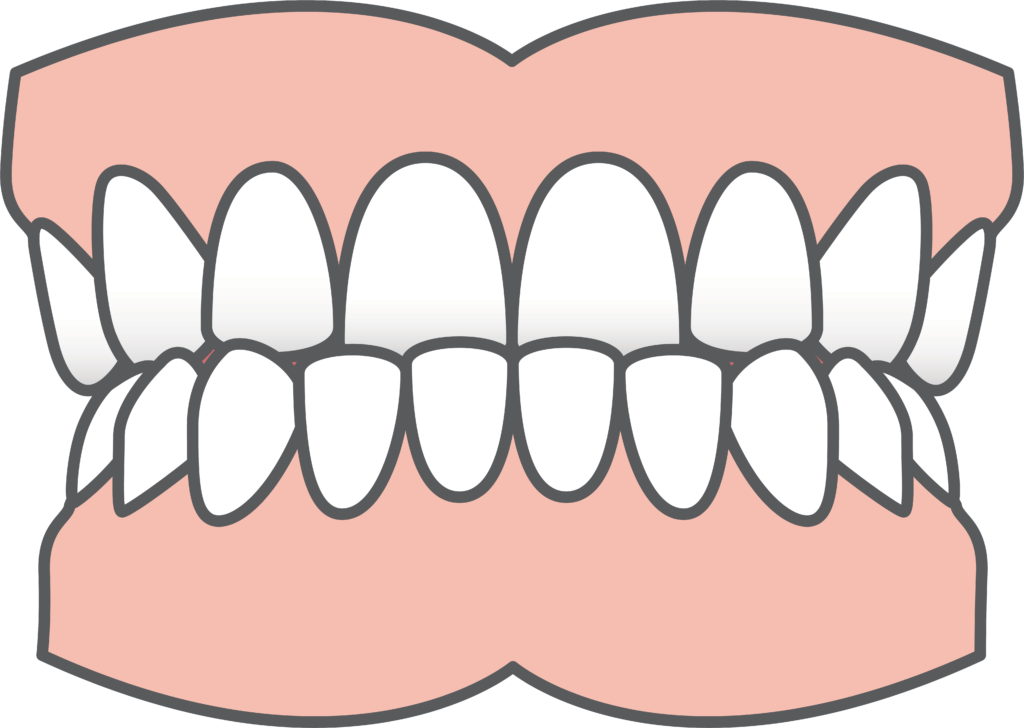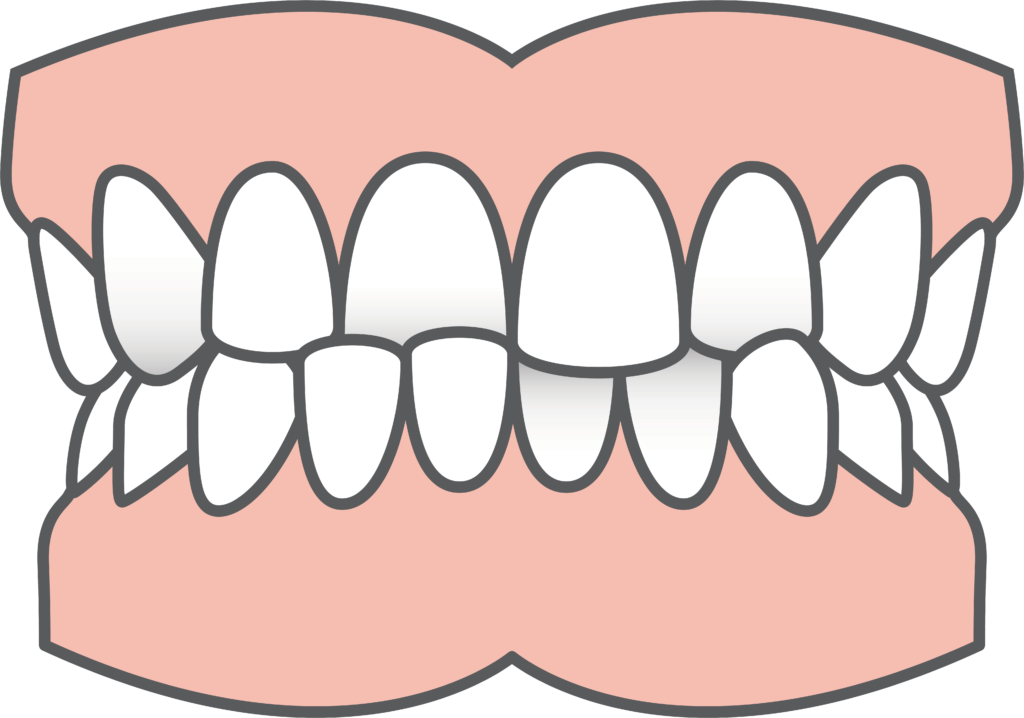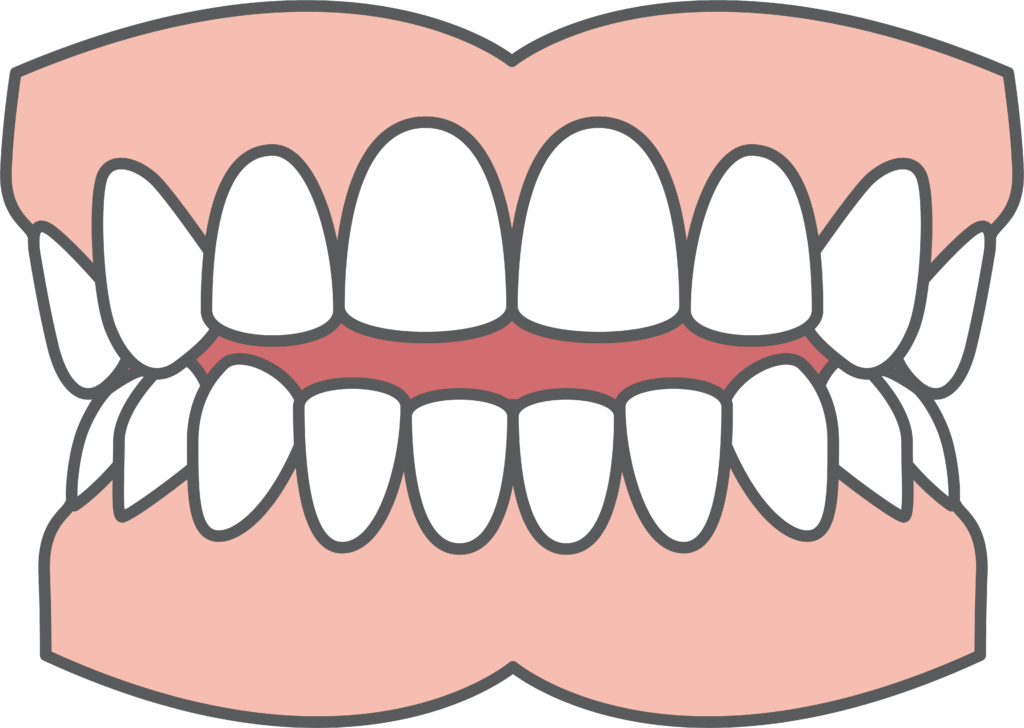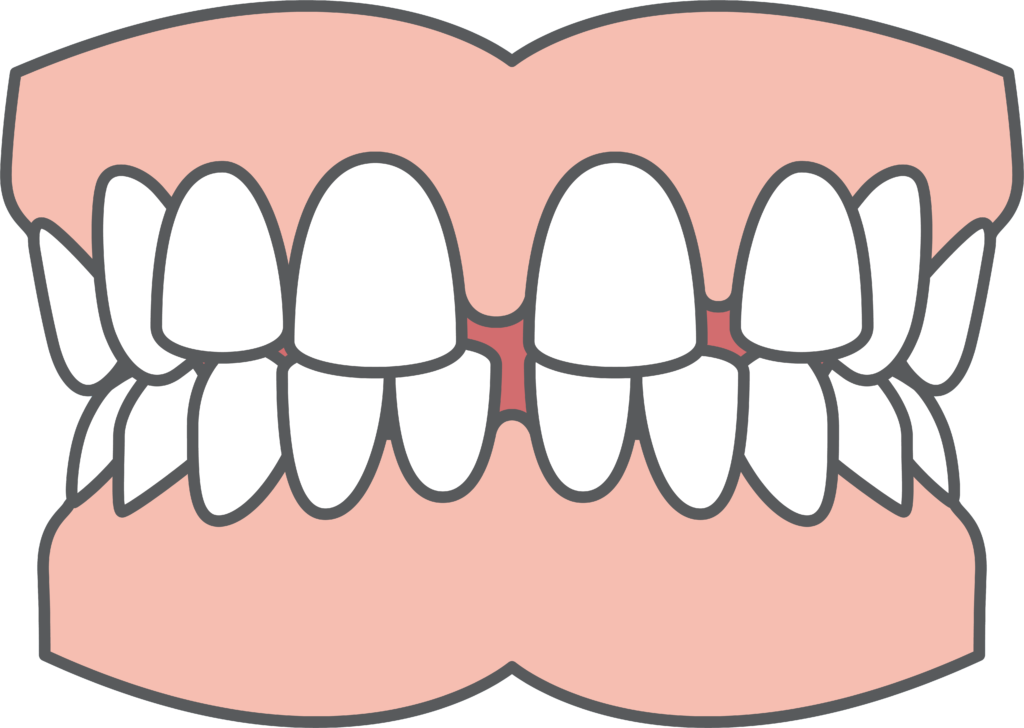Common Orthodontic Problems
Every patient is unique and every case is different! When Dr. Senties develops your treatment plan, it’s 100% personalized to you.
There are common orthodontic problems that we see in new patients, but your specific experience, your preferences and your ultimate smile goals make your case one-of-a-kind!
Underbite (Malocclusion)

When a patient has an underbite, this means the lower jaw is extending further than the upper jaw. This condition can cause pain and difficulty when chewing or speaking.
Overbite (Malocclusion)
When the upper jaw extends further than the lower jaw, this characterizes an overbite condition. Depending on how severe the condition is, an overbite can make it challenging to eat and chew properly. With some cases, the lower teeth will meet the roof of the mouth—ouch!
Crossbite (Malocclusion)

When the upper teeth are positioned inside the lower teeth, this is called a crossbite. This can either be a posterior crossbite (in the back of the mouth) or an anterior crossbite (toward the front of the mouth).
Crossbites can affect individual teeth or multiple teeth in a row. This condition is often caused by irregular tooth eruption, late loss of baby teeth or thumbuscking during childhood. It can also occur due to a mismatch in the size of the upper and lower jaws.
Open Bite (Malocclusion)

When some or most of the teeth touch and the mouth is closed, but some of the top teeth don’t meet the bottom teeth either in the back or in the front of the mouth, this is called an open bite. The top teeth should overlap the bottom teeth slightly in a healthy alignment.
An open bite can result from skeletal development problems and childhood habits such as thumbsucking.
Protrusion (Malocclusion)
A protrusion, also known as an overjet condition, occurs when the front teeth protrude outward. Commonly called “buck teeth”, an overjet generally results from underdeveloped jaw bones, or thumbsucking.
Spacing Issues

Although it is normal to have some spaces between primary (baby) teeth, excessive gaps or spaces between the teeth can also be caused by excessive space in the mouth, missing teeth congenitally or due to cavities or trauma, as well as childhood habits such as thumbsucking.
There may be spaces between two teeth or multiple teeth, in one dental arch or both dental arches.
Crowded Teeth
Teeth that are overlapping are considered ‘crowded’. More often than not, crowding is the result of insufficient room in the mouth. When the jaws aren’t wide enough to fit all teeth, the teeth start to overlap each other as they’re emerging.
In some cases, crowded teeth can be treated with a palatal expander appliance during childhood, while the jaws are still developing. In severe cases of crowding, Dr. Senties will discuss with you what else can be done to correct this problem.
How We Treat Common Orthodontic Problems
There is no one-size-fits-all approach with us! We treat every case on an individual basis. When you visit Dr. Senties for your free consultation, he’ll examine your teeth and bite to help you determine which treatment method will be most effective for your case.
Dr. Senties will consider every detail to create a treatment plan, 100% personalized to you. In most cases, you’ll be able to choose between traditional braces, ceramic braces or Invisalign clear aligners! An appliance may be used alongside treatment to achieve the greatest results in the shortest amount of time.
Have questions about common orthodontic problems?
We’re here to answer your questions, and we want you to know your options! Please don’t hesitate to reach out to us at any time.
Dr. Senties and our experienced team are here to help guide you throughout your treatment process, from your first visit to your last visit.
Ready to begin your smile transformation process? Let’s get started with your complimentary exam at our convenient San Antonio location!
Let's Get Started!
Your perfect smile is just a click away.
Book your free consultation with Dr. Senties and our team in Alamo Ranch, San Antonio, and start living the confident life you’ve always dreamed of.